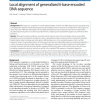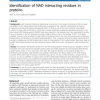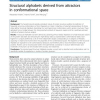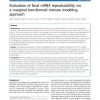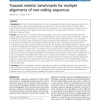BMCBI
2010
13 years 11 months ago
2010
Background: Automated protein function prediction methods are the only practical approach for assigning functions to genes obtained from model organisms. Many of the previously re...
BMCBI
2010
13 years 11 months ago
2010
Background: DNA sequence comparison is a well-studied problem, in which two DNA sequences are compared using a weighted edit distance. Recent DNA sequencing technologies however o...
BMCBI
2010
13 years 11 months ago
2010
BMCBI
2010
13 years 11 months ago
2010
Background: Small molecular cofactors or ligands play a crucial role in the proper functioning of cells. Accurate annotation of their target proteins and binding sites is required...
BMCBI
2010
13 years 11 months ago
2010
Background: Extensive biomedical studies have shown that clinical and environmental risk factors may not have sufficient predictive power for cancer prognosis. The development of ...
BMCBI
2010
13 years 11 months ago
2010
Background: The hierarchical and partially redundant nature of protein structures justifies the definition of frequently occurring conformations of short fragments as `states'...
BMCBI
2010
13 years 11 months ago
2010
Background: Graph drawing is one of the important techniques for understanding biological regulations in a cell or among cells at the pathway level. Among many available layout al...
BMCBI
2010
13 years 11 months ago
2010
Background: Developing and evaluating new technology that enables researchers to recover gene-expression levels of colonic cells from fecal samples could be key to a non-invasive ...
BMCBI
2010
13 years 11 months ago
2010
Background: With the continued development of new computational tools for multiple sequence alignment, it is necessary today to develop benchmarks that aid the selection of the mo...
BMCBI
2010
13 years 11 months ago
2010
Background: Today it is common to apply multiple potentially conflicting data sources to a given phylogenetic problem. At the same time, several different inference techniques are...

